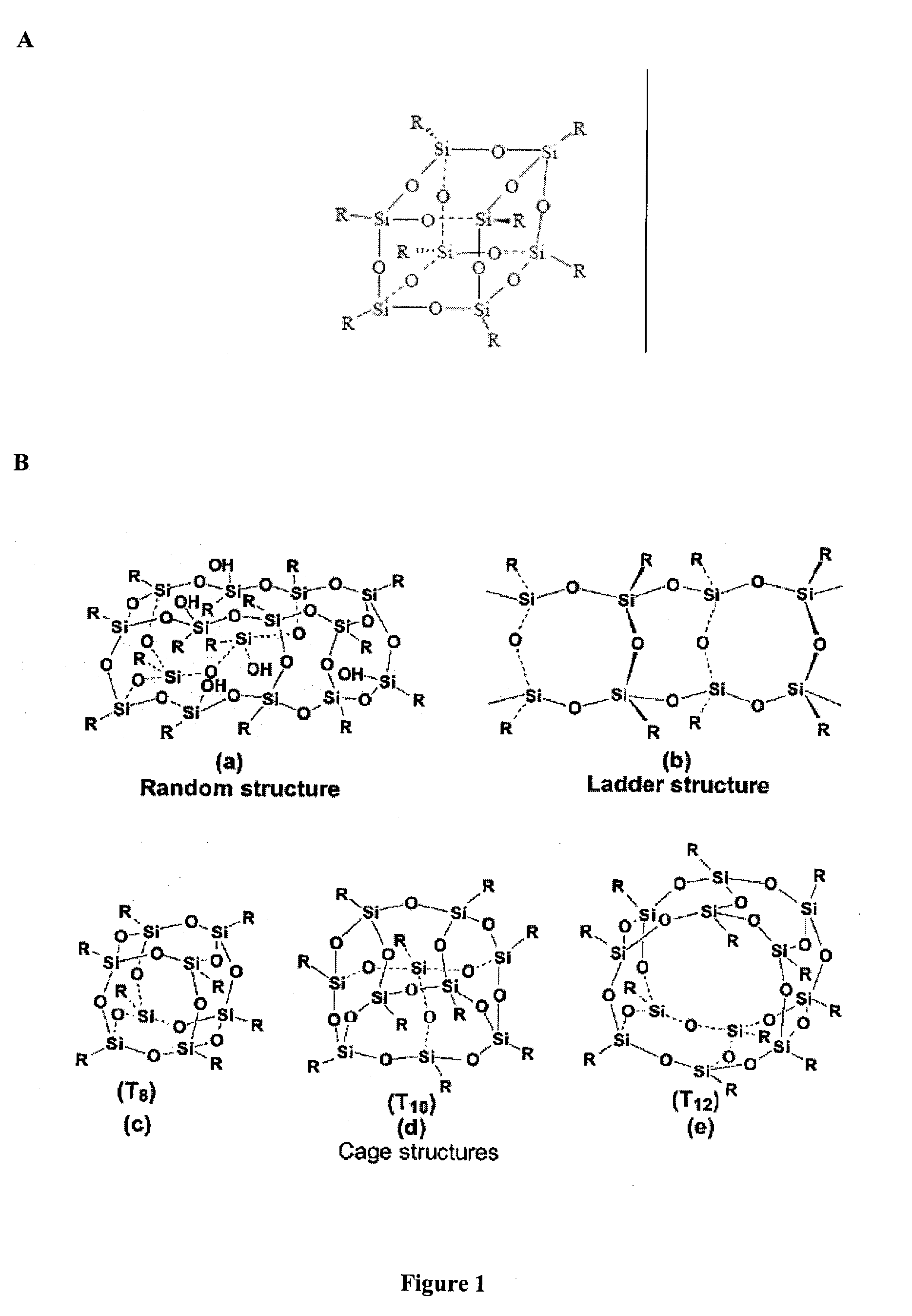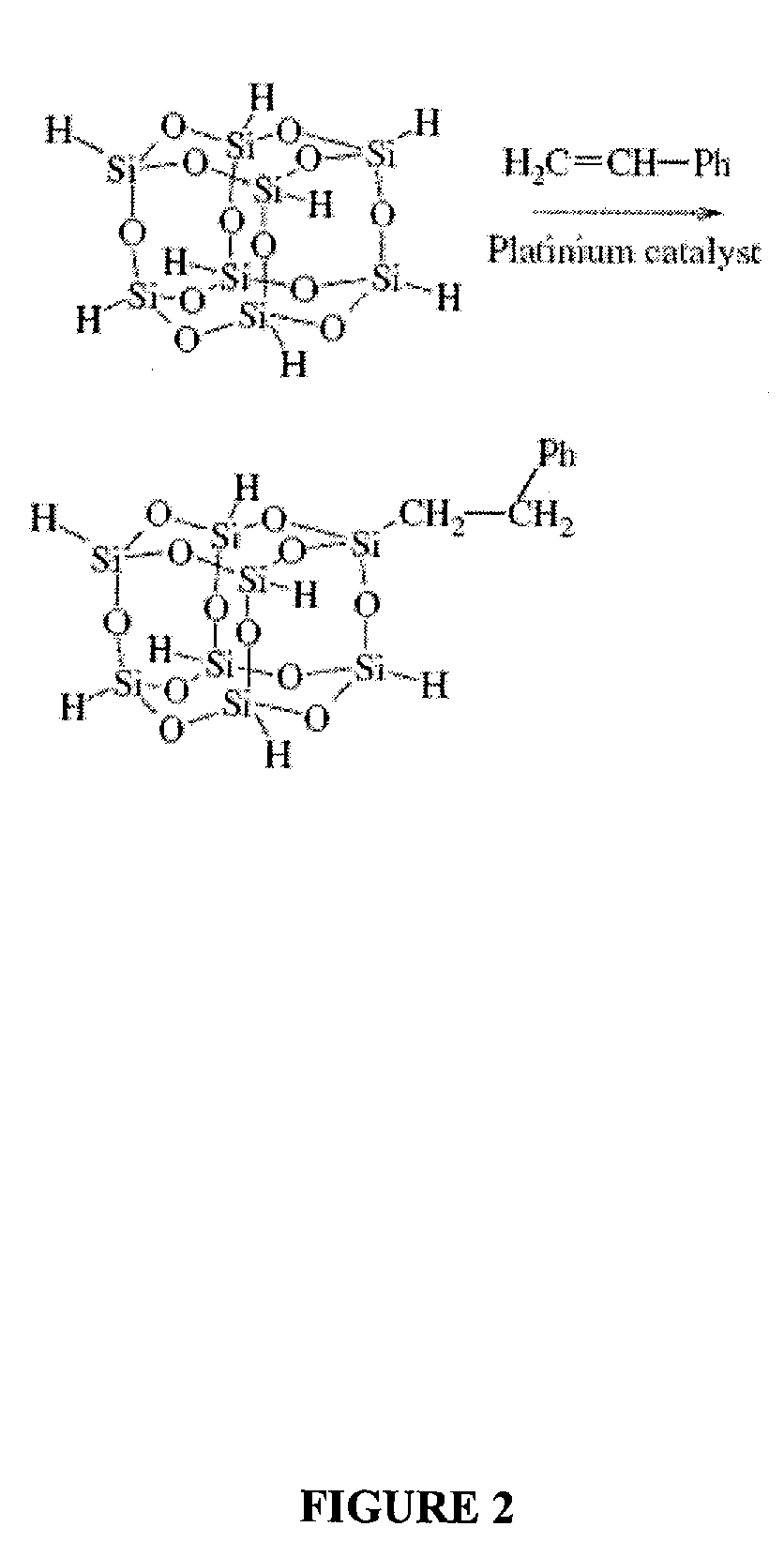Thermal-Responsive Polymer Networks, Compositions, And Methods And Applications Related Thereto
a polymer network and thermoresponsive technology, applied in the field of shape memory compositions, can solve the problems of affecting the broad use of known materials in biomedical applications, requiring high temperature and time-consuming processing, and limiting the physical properties of known materials
- Summary
- Abstract
- Description
- Claims
- Application Information
AI Technical Summary
Benefits of technology
Problems solved by technology
Method used
Image
Examples
examples
[0355]The following examples are provided in order to demonstrate and further illustrate certain preferred embodiments and aspects of the present invention and are not to be construed as limiting the scope thereof.
example i
Silicon-Based Nanoparticles
[0356]Silicon-based nanoparticles are chosen as the structural and mechanical anchor for grafting block copolymers to generate star-shaped macromer building blocks of the synthetic bone substitute. As described in FIG. 7A, octakis(dimethylsiloxy) octasilsesquioxane (POSS) was hydrosilylated by allyl alcohol catalyzed by platinum divinyltetramethyldisiloxane, Pt(dvs), to form a octahedral hydroxylated POSS core as shown in FIG. 7A (1) following precipitation in acetone / ether and repeated washing with toluene (90% yield). Grafting of biodegradable polylactide (PLA) arms to 1 was achieved by ring opening polymerization (ROP) of cyclic racemic lactide (5, 10 or 20 eq. relative to the number of OH's in 1). The polymerization was catalyzed by stannous octoate (0.2 wt %), which was added to the optically clear melt of lactides at 115° C. under nitrogen. Macromers 2 (POSS-(PLAn)8, wherein n=10, 20 and 40), were obtained in >90% yield. 1H NMR (FIG. 7B) revealed exp...
example ii
Crosslinking of Biodegradable POSS-(PLAn)8 and Characterization of Their Thermal and Mechanical Properties
[0358]Star-shaped macromer 2 (FIG. 7A) was crosslinked by diisocyanates to form the SMP which were cast into desirable “permanent” shapes, in one case (FIG. 10A), a coil, and in other cases, a hollow cup or a flat sheet with surface grid patterns (FIG. 10B). The Tg's of the hybrid SMP, as determined by differential scanning calorimetry (DSC), are close to body temperature and can be fine-tuned by manipulating the grafted PLA chain lengths. The Tg's ranged from 42.8° C. to 48.4° C. with the PLA segment grew from 10 to 40 repeating units (FIG. 7D). The storage and flexural moduli of the SMP are in the GPa range at both room temperature and body temperature, close to those exhibited by human cortical bone. The moduli of the SMP are tunable by PLA chain lengths and decreased with increasing temperature (FIG. 7E-7I).
PUM
| Property | Measurement | Unit |
|---|---|---|
| Tg | aaaaa | aaaaa |
| Tg | aaaaa | aaaaa |
| Tg | aaaaa | aaaaa |
Abstract
Description
Claims
Application Information
 Login to View More
Login to View More - R&D
- Intellectual Property
- Life Sciences
- Materials
- Tech Scout
- Unparalleled Data Quality
- Higher Quality Content
- 60% Fewer Hallucinations
Browse by: Latest US Patents, China's latest patents, Technical Efficacy Thesaurus, Application Domain, Technology Topic, Popular Technical Reports.
© 2025 PatSnap. All rights reserved.Legal|Privacy policy|Modern Slavery Act Transparency Statement|Sitemap|About US| Contact US: help@patsnap.com



